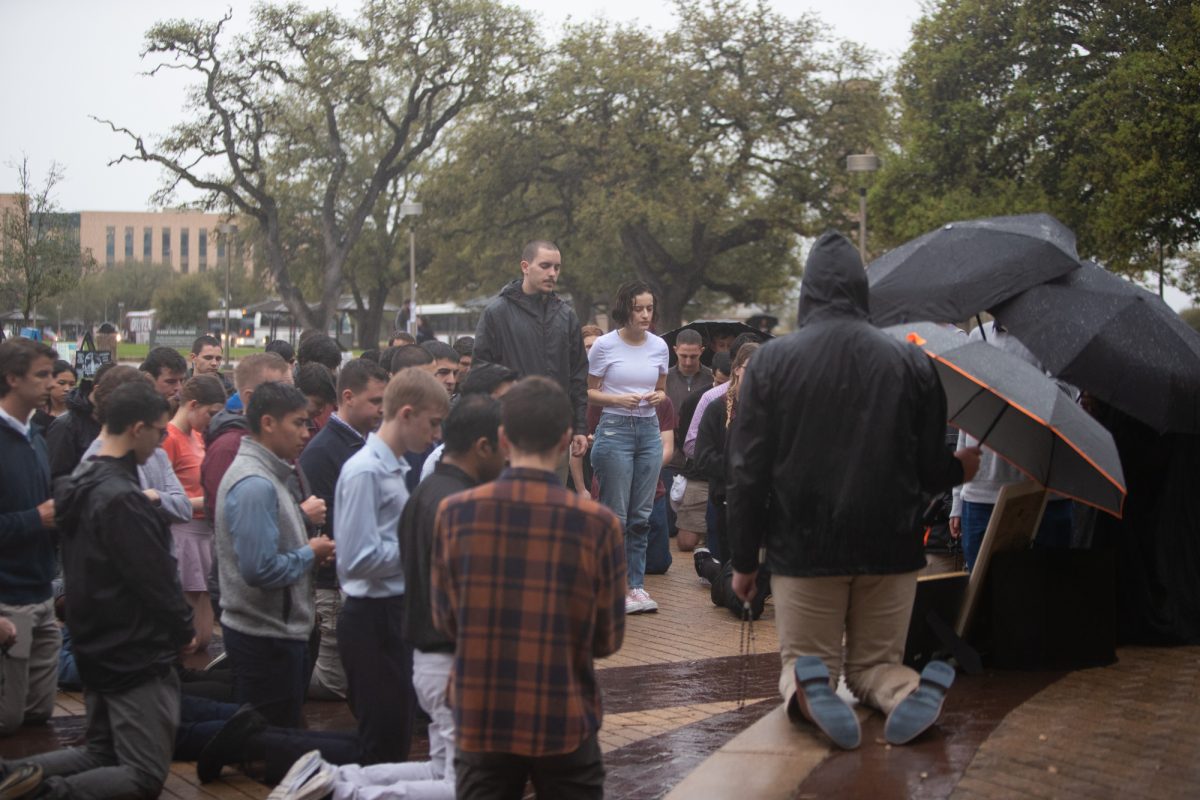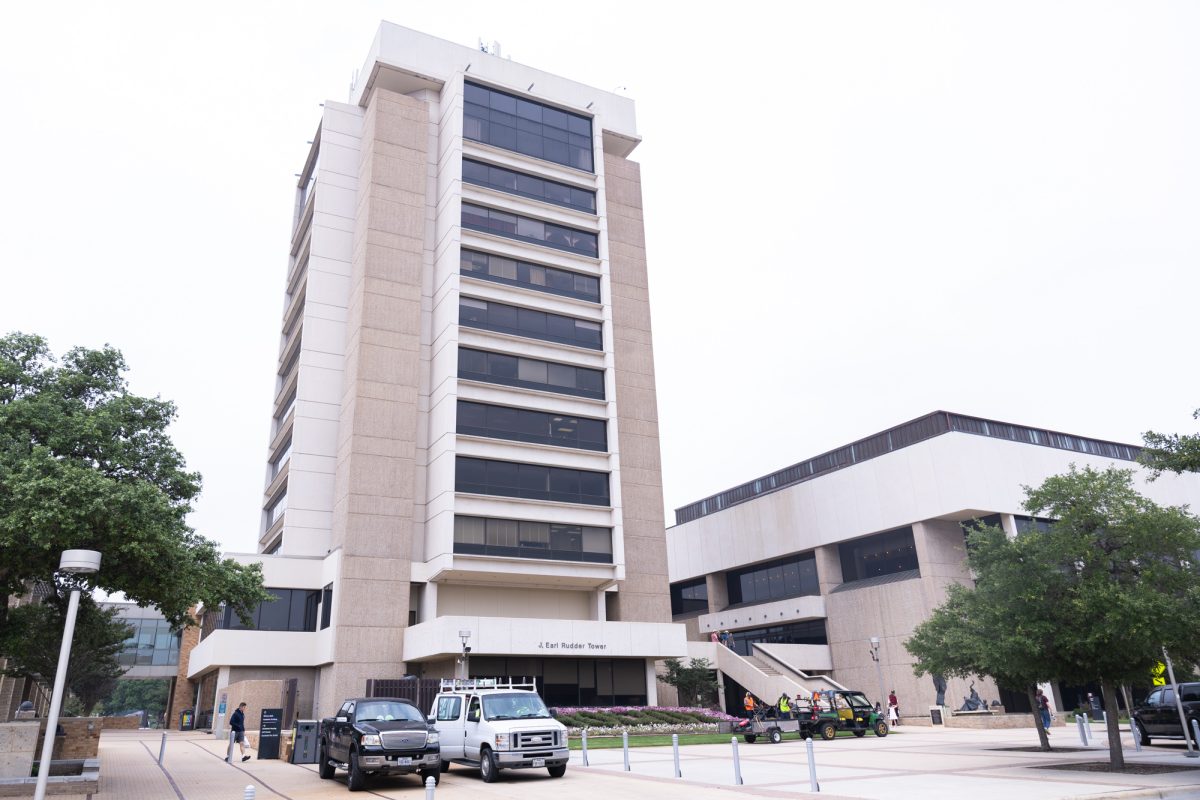On Friday, cadets commissioning into the military service branches will complete their four-year journeys and officially take their oaths to become officers in the United States Armed Forces upon graduation.
The military history of Texas A&M goes all the way back to its foundation as the Agricultural and Mechanical College of Texas, an all-male military college. Though much has changed in that time, the university continues to produce the largest class of military officers of any college outside the service academies, according to the Corps of Cadets website.
“Especially since the Marine Corps is one of the military branches most passionate about their history and A&M as well, to me it feels like you belong. That you’re not going to be forgotten. That you’re doing something that’s good,” said John Voss, international studies senior and U.S. Marine Corps commissionee. “I have several friends who go to [the University of Texas] who are planning on joining the military and to them, it’s not a very prideful military school, as you can imagine. And they are not just as passionate, in my opinion, about what they’re going to do as they could be if they had gone here.”
A&M is one of six senior military colleges, all with a standing cadet corps. As part of their commitments in the Reserve Officer Training Corps (ROTC) programs, the commissioning cadets were required to participate in the Corps of Cadets.
As part of their training, cadets in the various ROTCs attended assessment and training exercises during the summers of their sophomore or junior years with students from across the country. Shawn McArthur, geographic information science and technology senior and U.S. Army commissionee, said the culture of the Corps gives cadets an advantage over the non-senior military ROTC programs.
“The Corps just kind of gives you an advantage over the organizations that don’t [have a cadet corps] since we’re constantly in that military-type environment,” McArthur said. “The other [college] ROTCs do that a couple days of the week and then they are a normal college student, and here it’s a good hybrid between that and West Point, where you’re always in the military. It kind of just helps supplement that with being in a military lifestyle and being a college student. Our size also makes it very competitive here.”
Members of the Corps have served in every military conflict the United States has engaged in since 1876. One notable example is World War II and the current cadet uniform is derived from the Army uniform of that time. As told in the Standard, the official guideline book for the Corps, a total of 20,229 Aggies served in the course of that conflict, 14,123 of whom served as officers, surpassing the combined totals of the United States Military Academy and the United States Naval Academy.
“It’s motivating,” said Alexander Kirkland, political science senior and U.S. Marine Corps commissionee. “It’s a very traditional thing and I think it’s motivating to think about all the things those guys did, all that they went through and to be kind of carrying the torch forward from where they left off.”
Although A&M commissions cadets into all five branches of service — Army, Navy, Air Force, Marines and Coast Guard — most of them are commissioned through the three ROTC programs — Army, Navy (with a Marine Corps option) and Air Force.
According to Jordan Anderson, geographic information science and technology senior and U.S. Marine Corps commissionee, the Corps forms an invaluable part of commissioning cadets’ military training and development.
“The two work in tandem,” Anderson said. “They are working to make us better leaders. I had an incredible opportunity to serves as the Second Regiment commander this year, so my leadership position demanded a lot of me on the Corps of Cadets side and the ROTC was there to help advise me and to help me become a better leader. The ROTC has done a phenomenal job of giving all the information and the technical knowledge that I need, but the Corps of Cadets has given me that hands on experience and actually an ability to apply it.”
Marcos Velasquez, political science senior and Air Force commissionee, said the commitment of extended military service and its effect on familial responsibilities will form a large part of the career decisions he makes now and in the future.
“I do want to do 20-plus years in the military and that’s going to require a lot of moving,” Velasquez said. “So I have to make sure my spouse is my number one fan and she’s going to back me up in every decision I make and who is going to make me make these tough decisions. The minute my wife says we moved one too many times, that’s when I’ll say that’s fine and change my priorities to my family.”
Cadets joining the military reflect on A&M history of service
May 6, 2018
Photo by Cassie Stricker
Political science senior Brad Sauer will join the United States Army upon commissioning.
0
Donate to The Battalion
$2065
$5000
Contributed
Our Goal
Your donation will support the student journalists of Texas A&M University - College Station. Your contribution will allow us to purchase equipment and cover our annual website hosting costs, in addition to paying freelance staffers for their work, travel costs for coverage and more!
More to Discover











